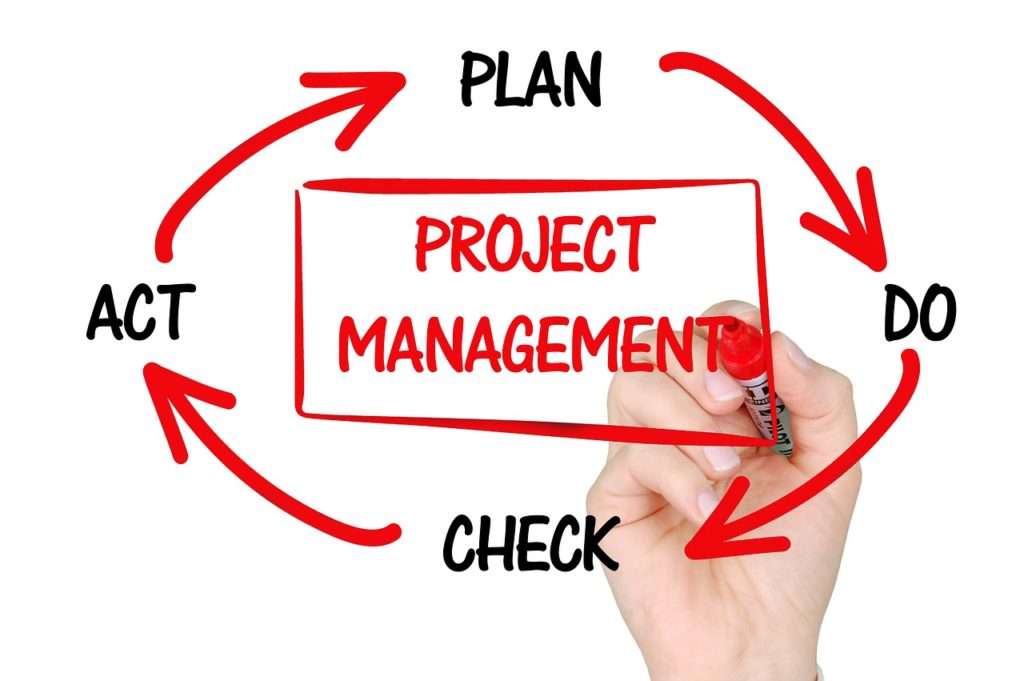Collaboration & Team Projects
When a new project gets underway, it is important to make sure that the team has a clear, shared understanding of what it is you are trying to accomplish. Don’t assume that everyone has the same understanding of the project that you do, even if they have read the same assignment description or brief or attended the same meetings. Each team member will bring their own perceptions and priorities to the project; this diversity of perspectives is a strength as long as the team is able to collectively ensure that those perspectives support the project’s goals. Basically, clear goals make sure that everyone has the freedom to use their strengths and still meet the rest of the team at the finish line with a successful outcome.
Often, teams have a “project kickoff” meeting or event in which every person on the team (and, potentially, members of a client team) has the opportunity to weigh in on and help establish the shared expectations for the project.

At the start of a project, make sure that you and your team have made decisions about the following:
- Goals, outcomes, and/or product. What are you producing or creating? Does everyone on the team understand what it is or what you are trying to accomplish? This might be as simple as confirming what’s required for a class assignment, or it might involve more brainstorming, planning, and negotiation for an open-ended or more complex project.
- Timeline or schedule. Does everyone know when the work needs to be completed? All projects must have an end date or a concrete timeframe for achieving the goal. You might know when the final deadline is, but it’s even more important for the team to create additional “internal deadlines.” Shorter-term check-ins and interim deadlines allow a team to ensure that every team member is producing work that aligns with the project goals and that the work can be combined into a cohesive project in the end. See below for more information about building project schedules.
- Roles and responsibilities. Does each team member understand what they are contributing to the project or what they are responsible for? Do you have a project leader or a communications lead? Teams can decide if they want or need someone in a specific leadership role—this might depend on the project and the team dynamic—but it is often useful to have a person overseeing all the different parts of a project and monitoring progress.
- Communication and information management. Do all the team members understand how the project will be built, created, and delivered? Have you agreed upon the best way to communicate with each other throughout the project—to provide progress updates? For instance, you might agree to send weekly individual status updates or hold bi-weekly project team meetings.
Document all of the decisions made and be transparent–make decision documentation accessible to everyone on the team. If anything changes, and things do often change during a complex project, those changes should be documented and distributed in the same way.
Project Schedules

Even for the simplest, most straightforward projects, a thoughtful project schedule is important because it serves as both a road map and a journal—allowing you to look ahead at the work that needs to be completed and look back at what’s already been accomplished.
Almost as important, the process of producing the project schedule forces you to imagine all of the necessary components and to determine how they will be produced and by whom. A project schedule represents how the work will get done and, ultimately, how the project will be successful.
Different companies and industries will have different standards and templates for project schedules, but all project schedules will document similar types of information:
- Timeline: A projection of when each part of the project will begin and end. For a project that has a definite start date, specific dates will be identified. For proposed projects, durations (e.g., 13 days or two months) are indicated. Timelines allow the project manager to map out the exact sequence of work.
- Deliverable: The tangible outcomes of project activities—those things that the project is designed to produce. A project will likely have multiple deliverables throughout the lifespan of the project. A report, a mobile application, a marketing campaign, a video, a presentation, a building, and a campaign event are all examples of deliverables.
- Project phase: A grouping of a series of logically-related project activities. A project phase will often end with the completion of a significant deliverable. A technical development project might be organized into Planning, Design, Development & Testing, Implementation.
- Tasks or Activities: The smallest units of planned work that go into a project schedule. These should represent the complete series of steps that will allow the project team to complete required deliverables. Tasks should also be associated with resources, so it’s clear who is responsible for completing the work.
- Milestone: Checkpoint in the project schedule. These help the project managers ensure that the work is progressing as planned and make decisions about next steps. A milestone does not have work associated with it, but often follows the completion of a major deliverable or project phase.
- Resources: The people (individuals or groups) who are assigned to work on the project in some capacity. Each task is the project schedule is associated with a resource and part of the project manager’s responsibility is to ensure that there are enough resources to complete the work as planned.
